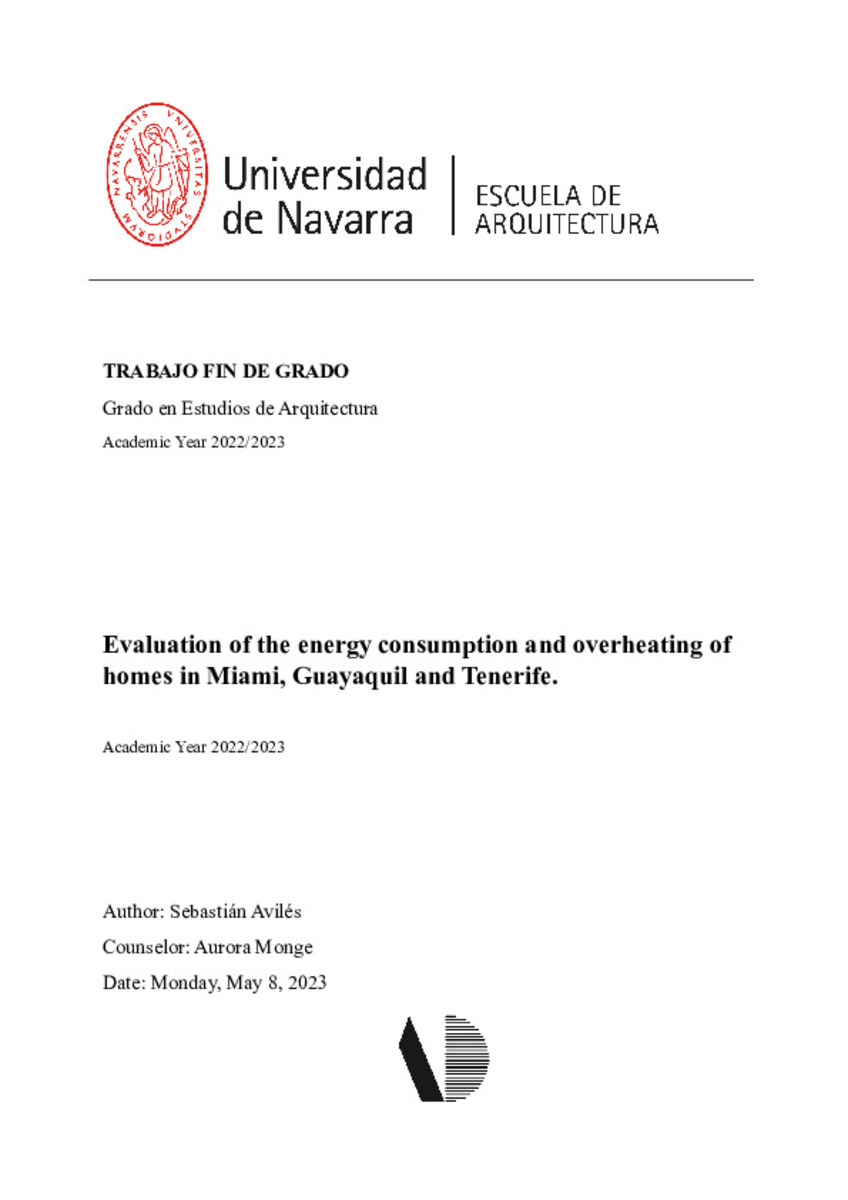Evaluation of the energy consumption and overheating of homes in Miami, Guayaquil and Tenerife
Ficheros en este ítem:
Estadísticas e impacto
Los ítems de Dadun están protegidos por copyright, con todos los derechos reservados, a menos que se indique lo contrario.







